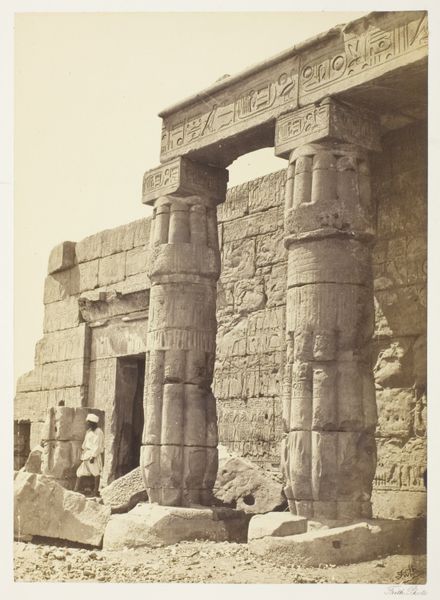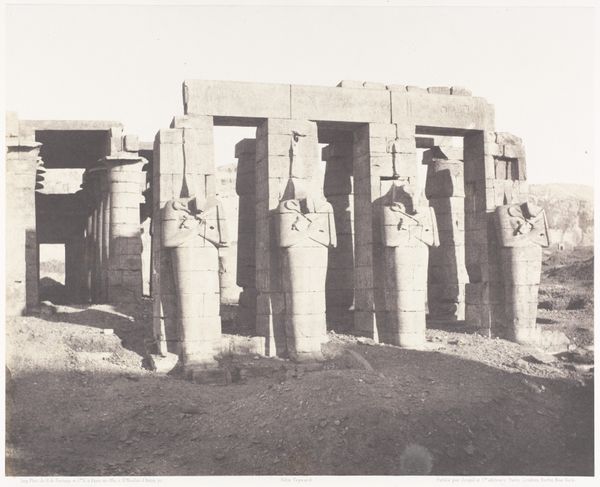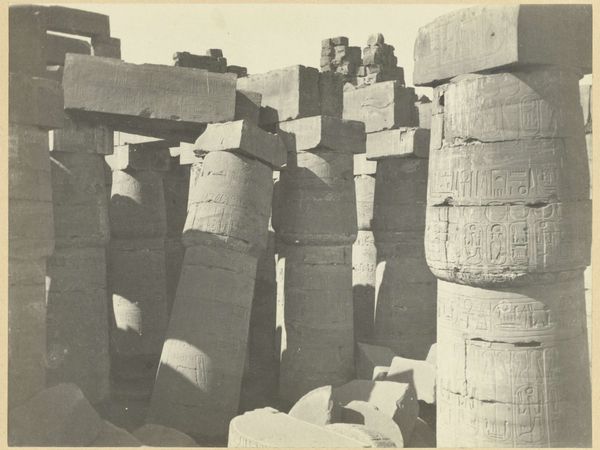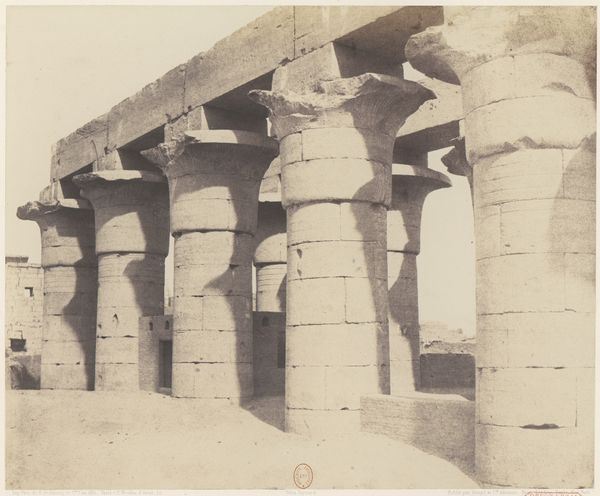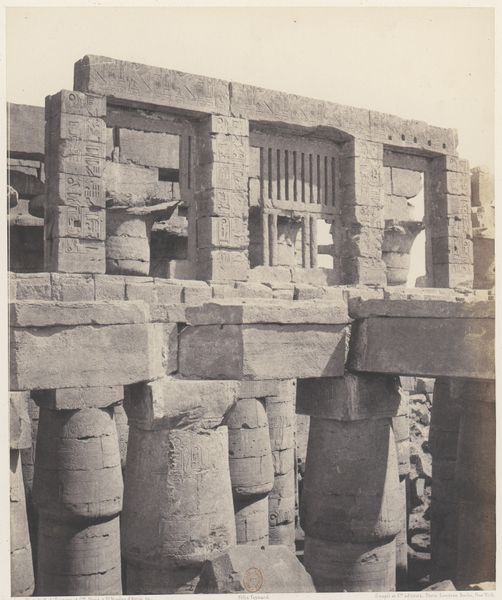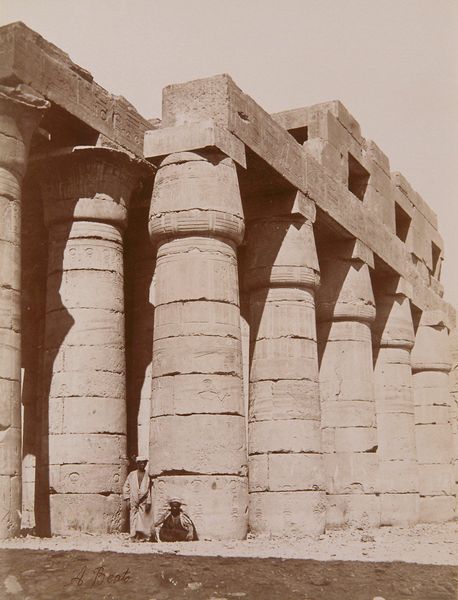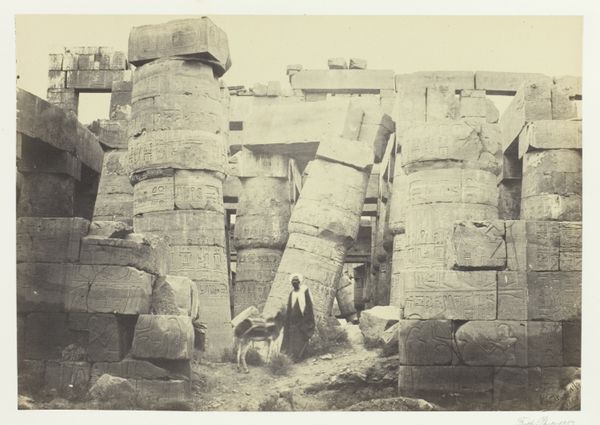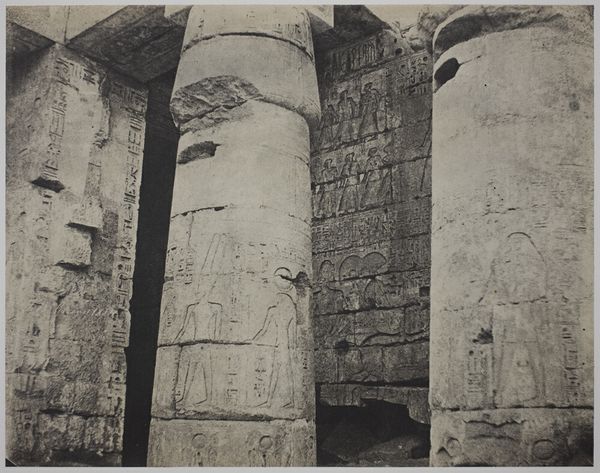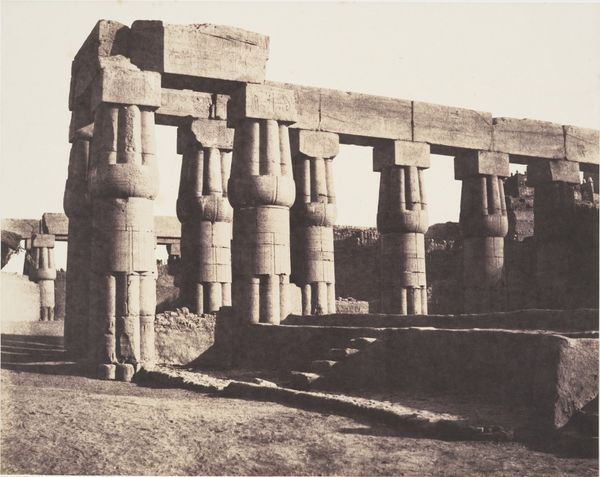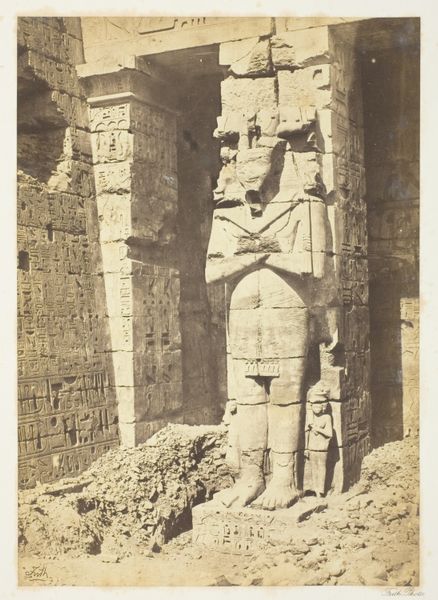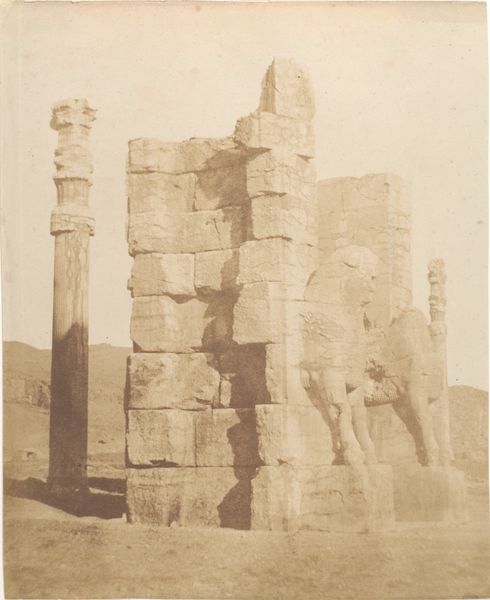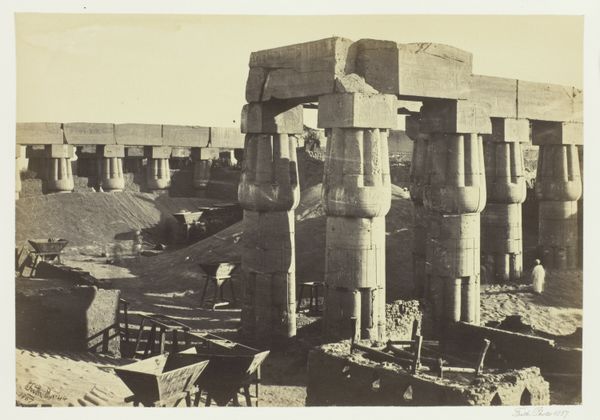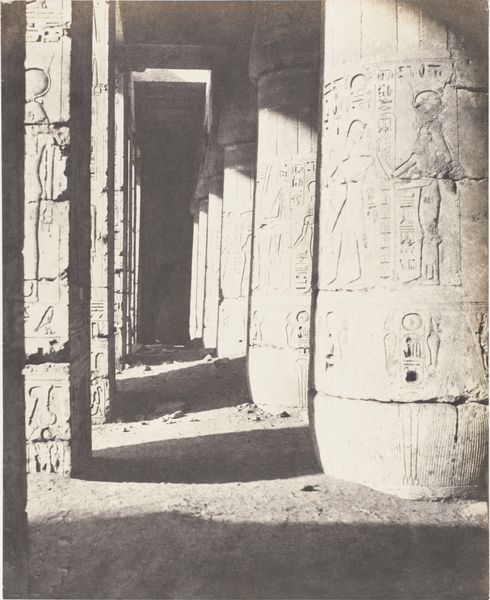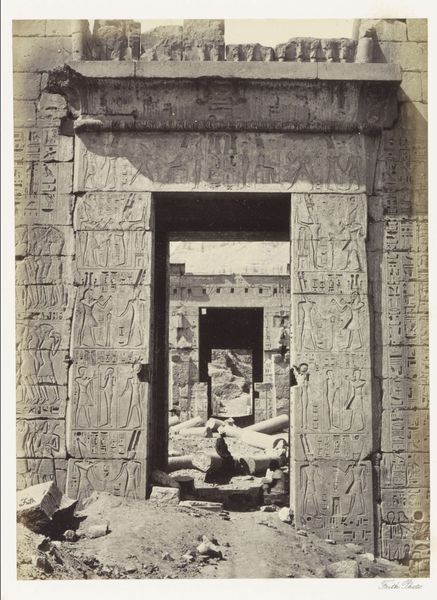
Karnak (Thèbes), Palais - Salle Hypostyle - Colonnade Centrale - Chapiteaux 1851 - 1852
0:00
0:00
carving, photography
#
excavation photography
#
carving
#
organic shape
#
landscape
#
ancient-egyptian-art
#
photography
#
carved into stone
#
ancient-mediterranean
#
column
#
monochrome
Dimensions: 30.3 x 25.4 cm. (11 15/16 x 10 in.)
Copyright: Public Domain
Editor: This is Félix Teynard's photograph, "Karnak (Thèbes), Palais - Salle Hypostyle - Colonnade Centrale - Chapiteaux," taken between 1851 and 1852. It depicts colossal columns. What strikes me is the sheer scale, emphasized by the monochrome tones and the rough, textured surfaces. What do you see in this piece from a formal perspective? Curator: I'm immediately drawn to the geometry. The interplay of cylindrical forms against the implied cubic masses above creates a powerful tension. Note how Teynard uses light and shadow to accentuate the three-dimensional structure, guiding the eye upward. The photographic medium itself contributes, translating stone texture into tonal gradations, reducing everything to formal pattern and contrast. Editor: So, it's less about the subject and more about the forms, shapes and patterns within the picture? Curator: Precisely. The columns themselves serve as modular units. Consider the negative spaces – the gaps between the columns. How do they function as compositional elements in themselves, echoing the shapes of the solids? The erosion is also relevant; how the ruinous state lends depth and richness to the photographic composition? Editor: It’s interesting how the damage almost enhances the composition, adding another layer of texture and form. So it’s not about history so much as a lesson in form and texture? Curator: Exactly. This image asks us to appreciate the power of simple shapes. Are there any specific compositional elements you find most compelling? Editor: I guess it’s how Teynard uses light to emphasize the three-dimensionality of forms and make them stand out, even after thousands of years of exposure. Curator: Precisely. It is through these manipulations of light and form that photography creates significance, apart from the historical weight. Editor: That's a fresh take for me! Now I understand how formal analysis transcends the artwork's surface. Curator: And how structure illuminates content, hopefully prompting viewers to develop more observant art-seeing strategies.
Comments
No comments
Be the first to comment and join the conversation on the ultimate creative platform.
